Mobile Application Development, no doubt, is an order of the day for almost all the functional business verticals. However, suppose you are an entrepreneur and looking to digitalize your business with the power of mobile applications. In that case, there are a few things you need to learn about it being an individual, especially about its development process, strategies and other insights. The main reason behind the same is that a slew of mobile app development companies globally bolster their outstanding services and prove to be rotten fruit when they hit reality.
Well, to get detailed insight about the mobile app development process and its strategy, you would require a well-curated piece, and maybe you would find it over the internet, but for the detailed one, you just need to relax! Because here we have written an article under the supervision of the technical team to furnish the exact knowledge that you are seeking to develop your mobile application.
So let’s dig deeper into the entire process, strategy and market worth:
Table of Contents
Mobile App Industry’s Potential in Figures
Google Play-store & App Store are experiencing a massive explosion in several app submissions and downloads. Mobile applications have become prolifically popular since it’s inception.
Talking about the current market scenario, the Apple App Store has 1.96 million apps available for download whereas the Google Play Store has 2.87 million. These amazing statistics show that the number of mobile app users is increasing continuously. So, if you build one for your business, then it will be a great investment.
Mobile App Usage Rate
- The Apple App Store has 1.96 million apps available for download.
- There are 2.87 million apps available for download on the Google Play Store.
- 21% of Millennials open an app 50+ times per day.
- 49% of people open an app 11+ times each day.
- 69% of all US digital media time comes from mobile apps.
- The average smartphone owner uses 10 apps per day and 30 apps each month.
Global Mobile App Revenue Rate
One of the leading stats and facts distributing platform Statista says about global mobile app revenue rate. According to the latest industry reports, the Mobile apps are expected to generate over $935 billion in revenue in 2024.
Mobile App Marketing Rate
To achieve heights in the mobile app industry, it’s quite mandatory to launch a perfect mobile app marketing plan. Unlock the current mobile app marketing rate:
- 51 percent of users say they discovered a new company or product when searching for their smartphones.
- 78% of location-based mobile searches result in an offline purchase.
- 54 % of marketers say they currently use a mobile app platform to market to their prospects
- Mobile ad placements grew 95 percent year-over-year in the United States.
After having a glance at mesmerizing stats and figures of the mobile app industry, it is clear that investing in the mobile app is quite a beneficial move for your business.
Mobile App Development Process & Strategies
Now let’s start the tour of this post that will alleviate the idea of the mobile app development process and strategies in a detailed manner.
The Research
All mobile applications begin with a thought, regardless of whether yours is simply to have a Mobile application presence. Refine that thought into a strong reason for an application. Ensure your underlying examination incorporates real socioeconomics, inspirations, conduct examples and objectives of your purchaser persona. Amid each phase of the procedure, remember the end client. Presently, attempt to think about your client’s life-cycle once their attributes are bound. After you contact them, they should be procured, changed over, held, and their devotion supported. Before the end, you ought to see how the client will utilize the computerized item. Doing this at the very beginning will set you on firm balance, and your clearness will give you and your speculators essential certainty.
This platform is fundamental because, amid this platform, you set out the critical basis for what is to take after straightaway. Do your bit of generous research and conceptualizing before proceeding onward to the following platform. What’s more, another vital piece of this platform is dissecting the opposition. A point-by-point investigation of your rival’s application will enable you to make sense of what highlights are missing in their application with the goal that you could incorporate them in your application to influence it to emerge.
- App Idea Discussion: Before diving down in the deep of the research, the conduction of an initial conversation to discuss the app idea and the rest information is quite mandatory. In the initial app idea discussion, its uniqueness and the problem your app is going to solve.
- Goal Definition: The next thing to do is define the goal of your app, and for that, you should understand what problem your app is going to fix, how much users-base you are planning to acquire, what amount of revenue you are looking to generate and what will be the success rate of your product.
- Competitive Research: After defining the app idea and the problem your future product will solve, the conduction of competitive research is quite mandatory. For this step, you need to understand the existing situation and think about why nobody else has previously made an app to solve this problem.If solved and made any application, research them all and identify what is missing in their application? How much market are they acquiring? And rest all the tiny info about competitors.
- User Feedback: To validate your app idea, talking to users with the same problem and figuring out the solution they are looking for is essential for the research. Immerse yourself in the problem space as much as possible. Once you have a complete grasp of the problem, begin to evaluate how a mobile app could solve the problem with the pointers noted from the user’s feedback.
- Collect Research Report: The collective details are turned out as an initial research report that will help you create a roadmap of the app development life cycle.
WireFraming
The following platform is to record and wireframe the application to comprehend future functionalities. Even though time isn’t your ally now, really drawing point-by-point representations of the imagined item encourages you to reveal ease of use issues. Portraying completes significantly more than only following your means, and it can be a capable correspondence and cooperation device. When you’re finished drawing, wire-framing will help refine the thoughts and orchestrate all Design segments correctly. You can conquer any specialized constraint found in the back-end development process in this underlying platform.
Presently, expect to build up an unmistakable comprehension of how your proposed highlights and thoughts will meld into a useful application. Likewise, you ought to make a guide or a storyboard to exhibit the connection between each screen and how the clients will explore the application. Search for chances to consolidate your image, centre around the client experience and remember the distinctions in the way individuals utilize a Mobile application versus a Mobile site.
- Prepare the Research: In the wire-framing research part, you need to research the user’s requirement, their mindset, and the app’s purpose. But besides these details, the main thing you need to perform there is to elucidate every feature and functionality you plan to integrate into the app. To achieve this, dig out the UX trends, review design guidelines, and think the top your users seek.
- Map Out Target User Flow: Mapping out the target user flow is like a task to guide a way to get the desired result. In this step, prioritize information architecture to ease the user’s end goal in the best possible way. Keep the user flow linear & convenient. While mapping the user flow, ensuring a smooth process is essential to avoid getting frustrated. To simply explain, mapping out user flow is like creating a flow chart. Sketch boxes and triangles, fill them up with functions and define the flow using arrows.
- Pick the Right Tool: After collecting the above information, select the right tool for wire-framing and create wireframes using the right tool. There are various wire-framing tools in the market InVision, Sketch, Balsamiq Wireframes, Mockflow, and Wireframe. cc.
- Do the Drafting: It might take a while to finally come up to this stage of drafting the wireframe, but the results are pretty satisfying. Go through each screen meticulously and define the core features of that particular screen.
- Wireframes Testing: The next step is to take it forward to prototype mode to create an impressive, user-centric app wireframe. The next step is to upgrade your work and create a prototype that naturally connects the elements.
Specialized Feasibility Assessment
You may have a reasonable comprehension of the visuals at this point. Yet, you likewise need to consider if the back-end frameworks will have the capacity to help the application’s functionality & this will take a throughout feasible analysis of app development process. To know whether your application’s possibility is achievable, you have to access open information by sourcing open APIs. Depending upon its organization (Mobile phone, tablet, wearables, etc.) and the platform (iOS, Android, and so on.), an application will have distinctive necessities. Before finishing this activity, the team may have specific thoughts for the application or choose that a portion of the underlying functionality isn’t doable. Now, conceptualize a bit, make inquiries and audit the status.
Five areas of feasible assessment:
- Technical Feasibility: Analysis of technical resources available in the organizations concerning the project requirement comes under technical feasibility. Under technical feasibility, an investigation would be done to understand the technical resource’s needs for project development.
- Legal Feasibility: Under legal feasibility, you should check every legal aspect that comes with the project development. You should perform the legal analysis required for the project, like data protection acts, social media laws etc.
- Economic Feasibility: Economic feasibility helps to analyze the budget, benefits and other economical factors related to the project development. Therefore, one should perform the economical feasibility with proper handle and care.
- Operational Feasibility: All the operational part that analyzes the product’s operation falls under functional feasibility assessment.
- Scheduling Feasibility: This is the primary feasibility analysis of the project. This decides the timeframe of the project’s completion, and that determines the success of the project.
Prototype
Create a rapid Prototype. Rapid is the catchphrase here. You can’t understand the touch involvement unless you touch the App and perceive how it functions and streams. Along these lines, fabricate a Prototype that gets the application idea into a client’s hands as rapidly as conceivable to perceive how it works for the most well-known utilized case. Utilize harsh and not thorough wireframes for this platform. This will enable you to check whether you are taking things the correct way. Incorporate the partners in this procedure; allowing them to touch the Prototype will give you their input and actualize it into your work. What’s more, also, the Prototype will give distinctive partners the main take a gander at your application and will enable you to approve the data you’ve assembled.
- Define Key functionality: Observe hundreds of competitors’ apps and identify which one stands out and why. Based on exclusive research, you need to decide which features you wish to have in your application.
- Create User personas: Creating a user persona defines your user’s need and the area of interest. Acknowledging the same, you can create or design the best features and functionalities of the application and match the expectations.
- Design Primary Screen: You have to start preparing rough sketches of the primary screens. The preliminary sketches should include profile management, dashboard, and matches.
- Create Prototype: Transform your low-fidelity wireframe into a clickable prototype that encourages interaction. You can use online tools or just a pen & paper to start crafting a more realistic product. Creating prototypes gives realism to the future app.
- Test Prototype: Now that you have designed an app prototype, it is time to test the design. Directly, you can collect some meaningful insights and update the app accordingly.
Design
When you get this progression off the beaten path, you can jump into coding. Your client encounter (UX) designer drafters the association between Design components, while the (UI) planner constructs the look and feels of your application. This is a multistep procedure with its numerous audit platforms. You get plans and visual heading, advising your architects of the imagined last item and how communication should move, feel and stream. Depending upon your task scope and application spending plan, this Design platform can be finished in a solitary evening or can take a team a ton of hours.
Moreover, make sure to make various varieties of a screen by playing around with the format of a route, catch, and other visual components. The more your item fluctuates, the higher the odds of your UX being unique. Application designing will be a multi-step process, and your outcomes should be precise visual bearings giving a deliberation of the last item. Apart from this, make sure that developers use UI UX tools to make your app look more attractive and engaging.
UX Design
- Wireframes: Begin the process by writing down a list of features you want the app to perform and a list of what needs to be displayed somewhere in the app. These are the basal building blocks with which we will build the wireframes.
- User Flows: Make the user flow as impressive as much. Creating an intuitive workflow so your users will not face any issues while performing their tasks at few flows.
- Common User Actions: User actions are away your user experiences your wireframes on the phone for more realistic testing. For example, clients receive a link, which allows them to click through the wireframe when opened on their phone.
- Validate Assumptions: This one validates the assumption of the users whether they like or dislike the current integrated features, functionalities and flow of the app.
UI Design
- Brand Integrations
- Design Framework
- Consistent Language
- Input Feedback
- Iteration
Planning
The sprint’s planning period includes partitioning the rundown of tasks to be executed amid the present emphasis. In addition, each undertaking needs unmistakably characterized necessities. Once developers comprehend these prerequisites, they will regularly assess the time expected to finish each undertaking, with the goal that the errands can be equitably circulated to guarantee an adjusted workload amid the run.
Developers also begin planning their approach to solving their assigned problems during this phase. Skilled software developers find ways to reuse code throughout an application intelligently, and this is particularly vital for actualizing styles and shared functionalities. On the off chance that the design needs changes (trust me, something will transform), you would prefer not to need to go and refresh code in various spots. Instead, very much composed programming can be changed in select areas to roll out these clearing developments.
- Tech Stack selection: Planning includes a proper selection of tech stacks for mobile apps. What technology is your app going to develop upon? These fall under the planning section. Following the trend, choosing a technology stack will define the future success and sustainability of your app.
- Business Model: What should be the business modal of your app development project? Suppose you have approached any mobile app development company for your app development. In that case, you should also discuss the business model of your product development that concludes the timeframe, cost, and budget
- Resource Allocation: The team of app developers, designers, BAs, and quality analysts is the resource that builds and designs tests the application. Your technology partner will allocate you as per your product requirement.
- Milestones Planning: Once the steps mentioned above are done, your app development task needs to be defined in the milestones and all the functions described in the sprints and milestones with a specific timeframe. Planning these provides an organized way to complete your app development process.
Development
Amid the development phase, your mobile app development team will start actualizing the styles and functionalities of your application. Then, they are doled out back to a project manager or QA tester for audit as they are done. Great project managers can ultimately enhance designer workloads amid this procedure by appropriately redistributing assignments all through the run.
Your development team must entirely comprehend the mobile application’s objectives in general and the particular component they are dealing with. No one is more tuned into that specific element than the doled-out designer, and they ought to comprehend the goal of the necessities. On the off chance that something begins not to bode well, it is frequently developers will’s identity the first to tell you.
Front-end development
There are three approaches for front-end development: platform-specific native, cross-platform native, and hybrid. Here is a brief overview of each system and some articles that delve into each with more significant details.
- Native: Apps worked with this methodology are composed independently for every mobile platform. Code can’t be reused among Android and iOS, yet these apps can be wholly streamlined for every forum. The UI can look native, and the app should work smoothly. This is regularly the most costly methodology, and however, it is exceptionally attempted and tried.
- Cross-platform Native -Apps worked with this methodology have a few codes, yet at the same time run natively. Some technologies utilized for this are React Native, Xamarin, and Native Script. This is an excellent centre ground between the different methodologies in that it is more practical. However, it can, in any case, be enhanced and styled for every platform.
- Hybrid -Hybrid apps are developed utilizing web development (HTML, CSS, Javascript) and are introduced using a native covering. This should be possible utilizing technologies such as Cordova, Phone Gap, and Ionic. This choice can be the least expensive yet additionally presents some genuine hardships.
Back-end (Web API and Server)
The server is answerable for quite a bit of your app’s performance and stability. Here are some of the emerging web app technologies that you can use to build apps. The following are a couple of things you need to choose before composing code:
- Language: There are many languages that can be used to build your API. Everyday language use is Java, C#, Go-lang, javascript, PHP, and Python. Most languages likewise have various systems that can be used.
- Database: There are two principle kinds of present-day data sets, SQL and noSQL. SQL is more customary and the ideal decision in practically all cases. Common SQL implementations include MSSQL, MYSQL, and PostgreSQL. As well as choosing an information base motor, you need to plan your specific data set outline. Having dependable and efficient data is essential to your drawn-out progress. Along these lines, ensure this is thoroughly examined.
- Hosting Environment: In this step, you want to conclude where and how your API and data set will be facilitated. Choices made here will assist with deciding the facilitating costs, adaptability, execution, and unwavering quality of your application. Common hosting suppliers include Amazon AWS and Rackspace. Beyond picking a supplier, you want to arrange how your framework will scale as your user base develops. Cloud-based solutions permit you to pay for assets as a utility and scale all over depending on the situation. They likewise assist with database backup, server uptime, and operating system updates.
Testing
In mobile app development, it’s a smart thought to test early and frequently. Doing this will keep your last costs low. The more remote you go into the development cycle, the costlier it moves toward becoming to settle bugs. Allude to the first outline and arrange archives while working out the different experiments.
Application testing is tremendous, so ensure your group covers all the essential aspects of it. The application should be tried for convenience, similarity, security, interface checks, stress, and execution. In client acknowledgement testing, you find whether your mobile application works for your planned clients or not. To test this, give your application to a couple of individuals in your intended interest group and make germane inquiries. Once your application finishes the client acknowledgement test, you know your answer “works.”
- Functional Testing: Through this type, the app is tested against the functional requirements/specifications of the client. It provides the appropriate input and expects the correct output, testing the user interface. In short, all the user requirements are specified by the business are well tested.
- Non-functional Testing: It focuses on the excellent quality of app software, especially the non-functional aspects such as response time, security, scalability, usability, performance. In addition, it covers all the tests that are not covered in functional testing.
Deployment
Your application is prepared to submit. Pick a day and key up a formal launch. For various application stores, the approaches of propelling an application are unique. Furthermore, remember, this isn’t the end. Mobile Application development doesn’t end at dispatch. As your application gets into clients’ hands, the input will pour in, and you should join that criticism into future variants of the application. Each application will require refreshes and new highlights. Regularly, when the primary rendition of the application is discharged, the development cycle starts once again. Ensure you have the assets to keep up your item. Aside from the cash put resources into building a computerized thing, remember that it’s an extended haul responsibility.
- App Stores & Web: Most mobile apps require a server back-end to function. These web servers are responsible for transferring data to and from the app. If your server is overloaded or stops working, the app will stop working. In that case, you can hire mobile app developers to solve your queries.
- Store Standards: Submitting your apps to the app stores is a moderately involved process. You need to make sure your apps are correctly configured for release, fill out several forms for each store, submit screenshots and marketing materials, and write a description.
Marketing
This progression in the Mobile app development process is tied to distinguishing the most significant difficulties you will confront when showcasing your application. Accepting you have a dependable application development and configuration group, your most significant obstacles will probably drive application selection. There are a large number of lovely and precious applications on the application stores that go unused. Now you have to comprehend what your Marketing Capital plan and approach will be. Sometimes (like inward utilize applications or B2B applications), you won’t require advertising.
The Final Verdict
The mobile app development process is a strategic process that involves meticulous planning, thoughtful design, agile development, and rigorous testing. Therefore, you must understand each phase of this process. By learning the mobile app development process, you can transform your app idea into a fully functional and user-friendly app that resonates with your target audience. So, whether you are a startup or an entrepreneur, you need to work with a top-rated mobile app development company to build an app and further enhance the quality and efficiency of your app development journey. They can guide you with the right approach, tools, and expertise to help you bring your vision to life.

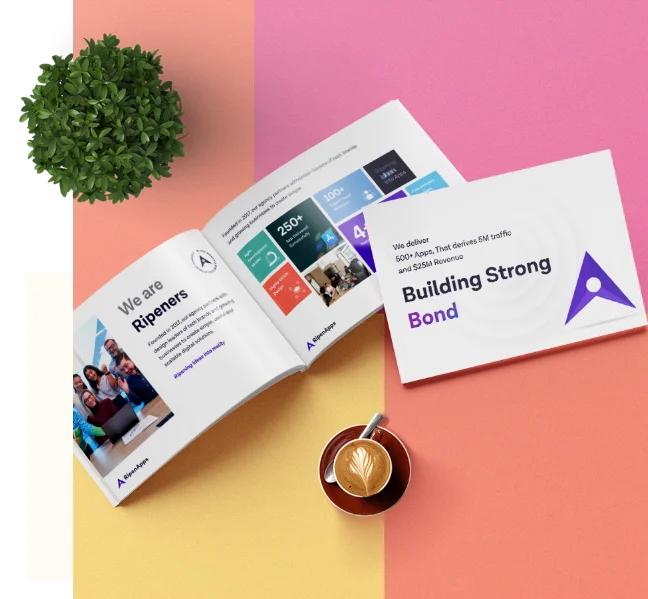
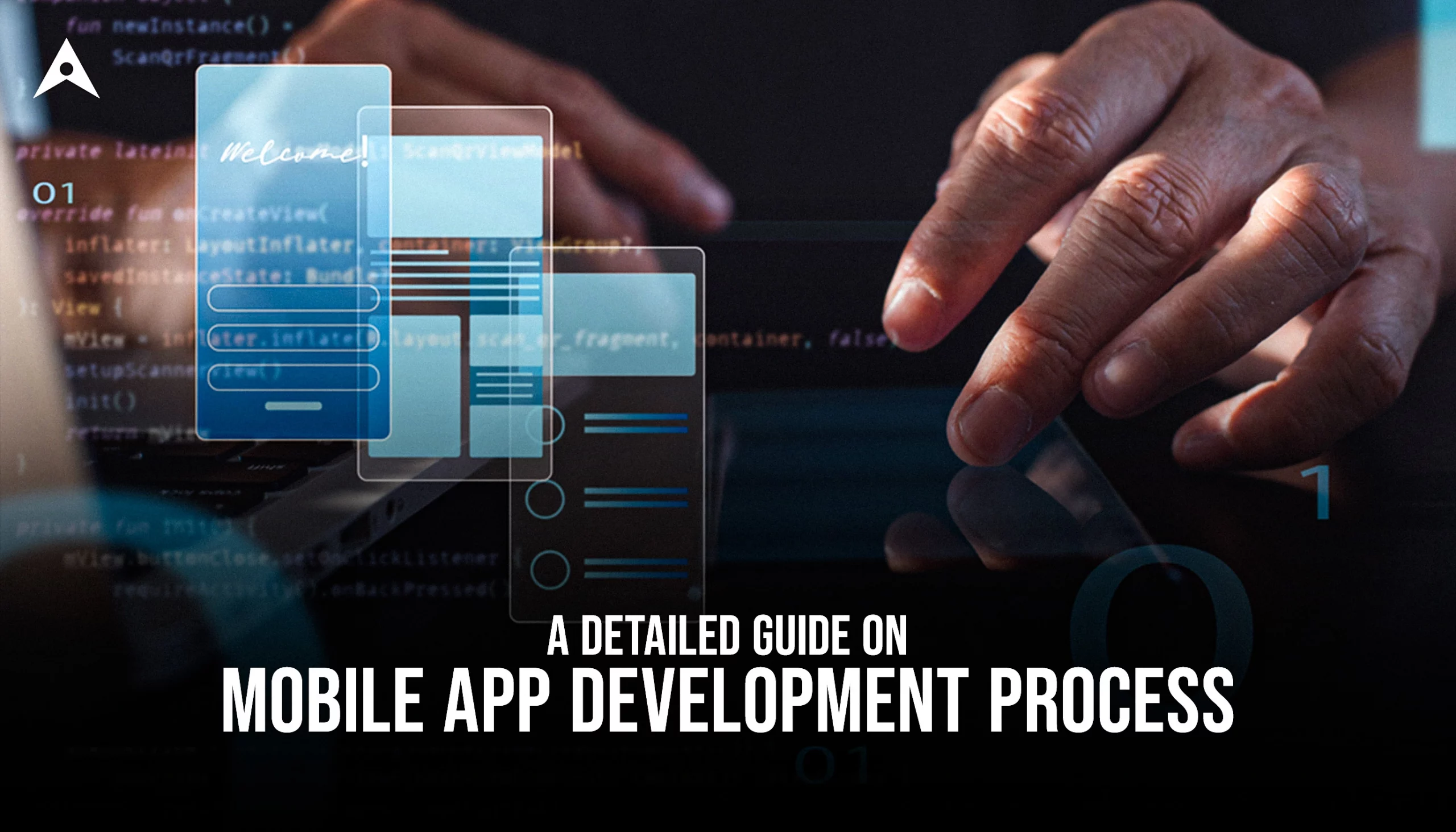




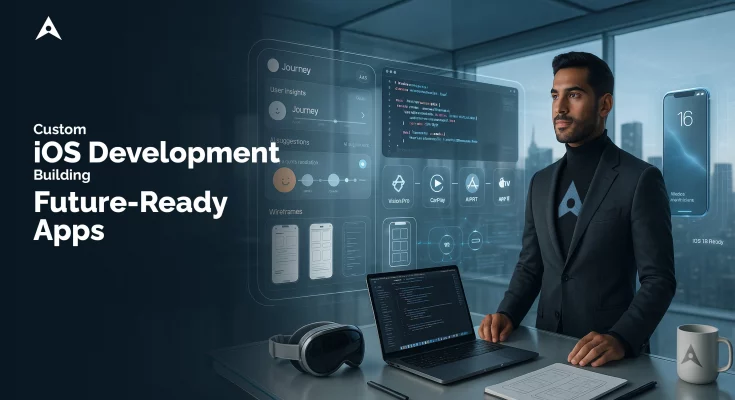
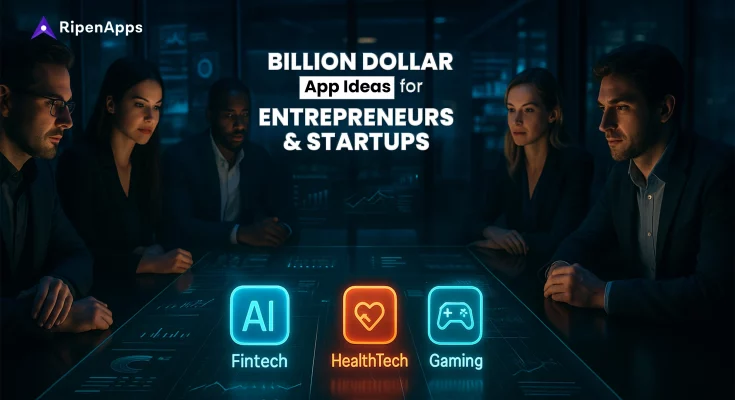
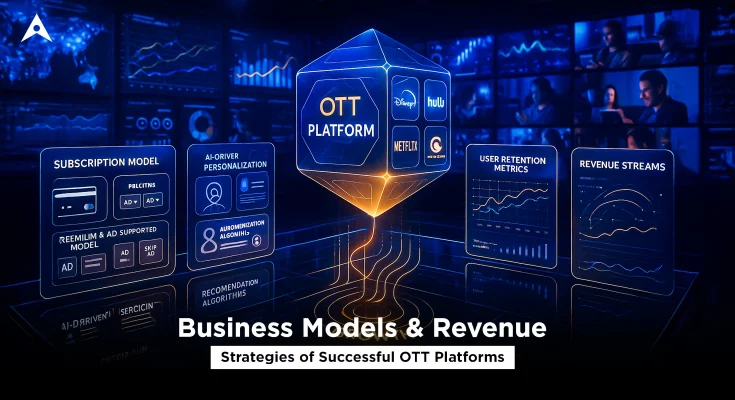

 India
India USA
USA Australia
Australia Canada
Canada UK
UK UAE
UAE
